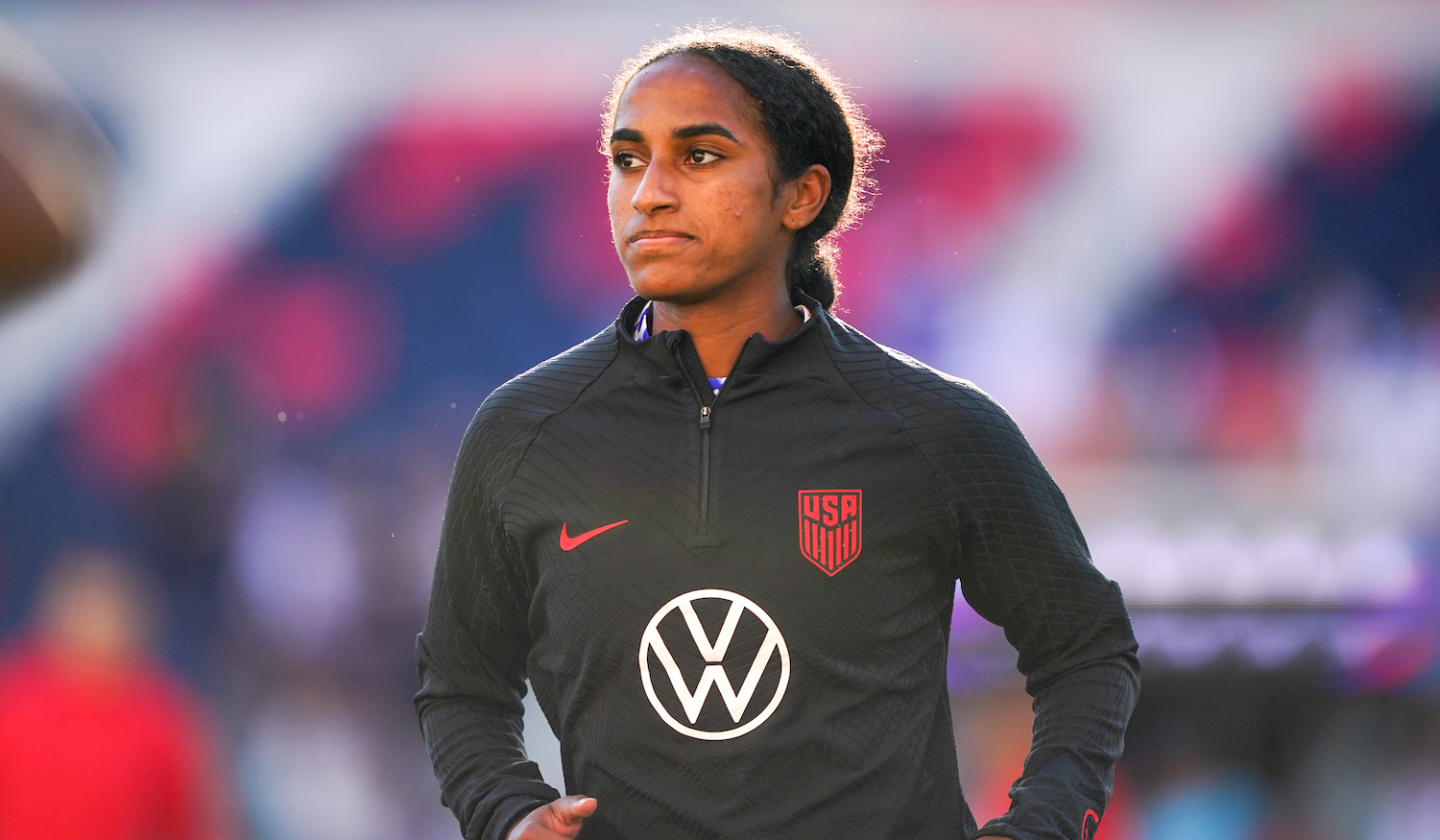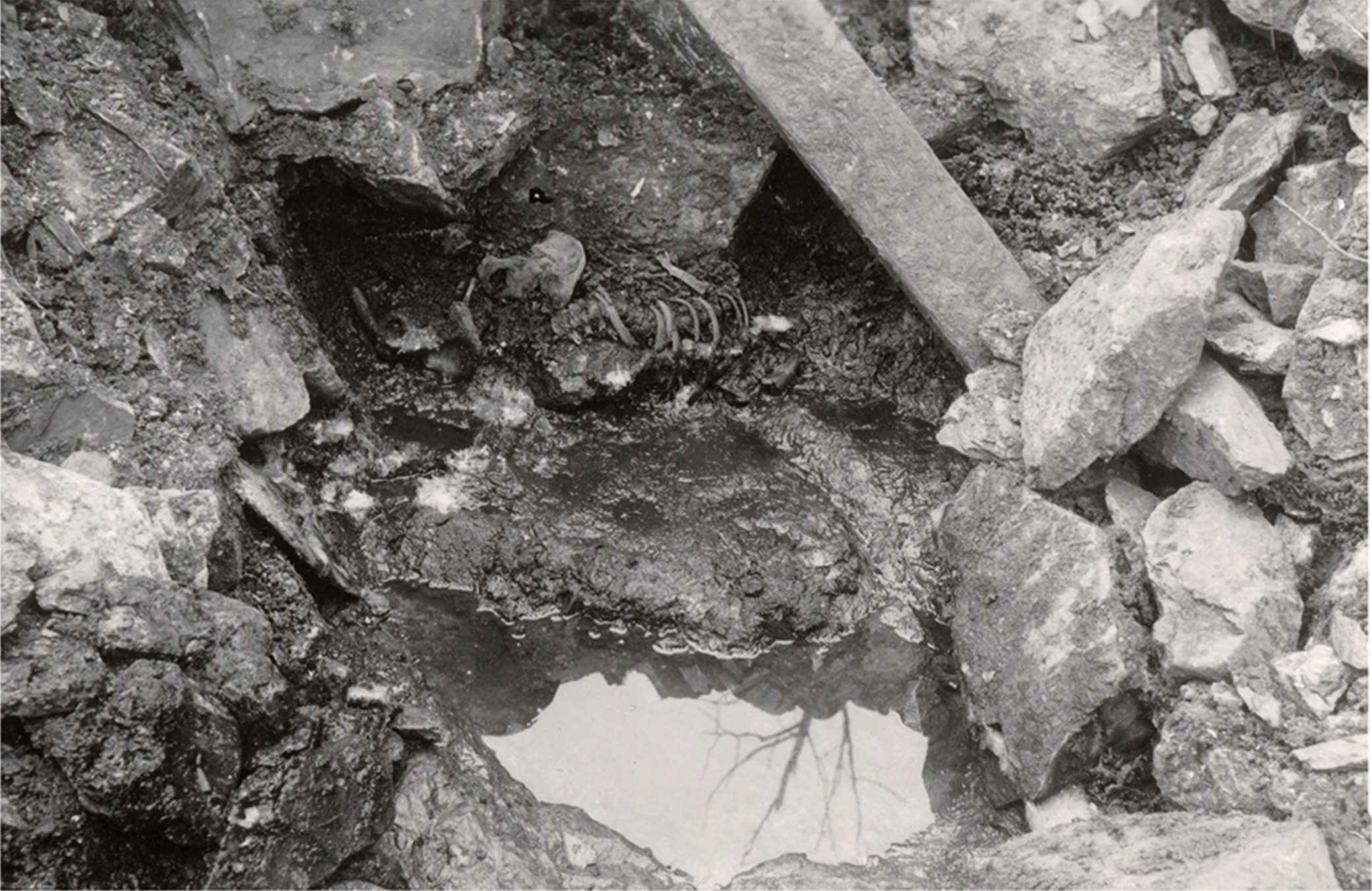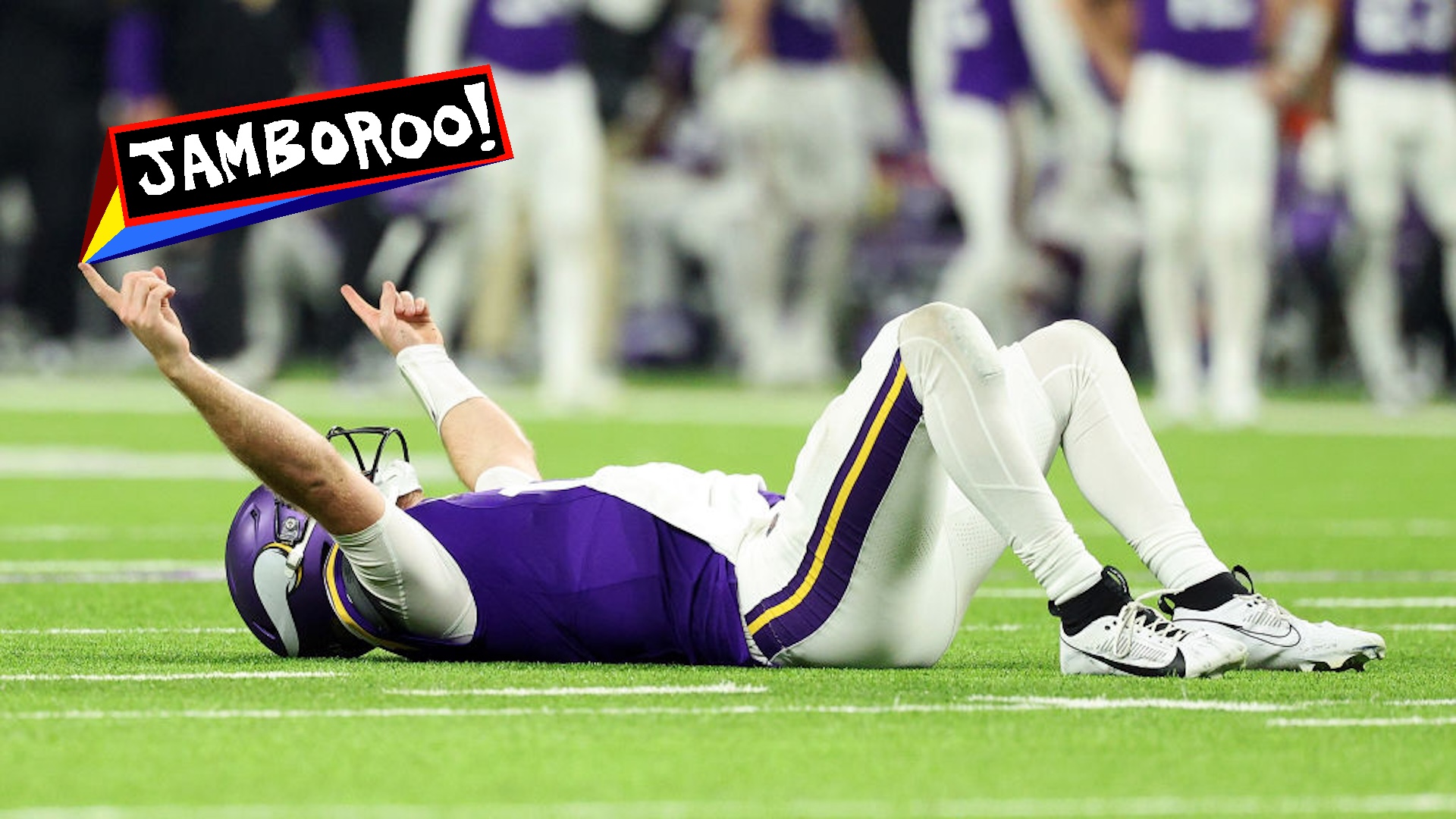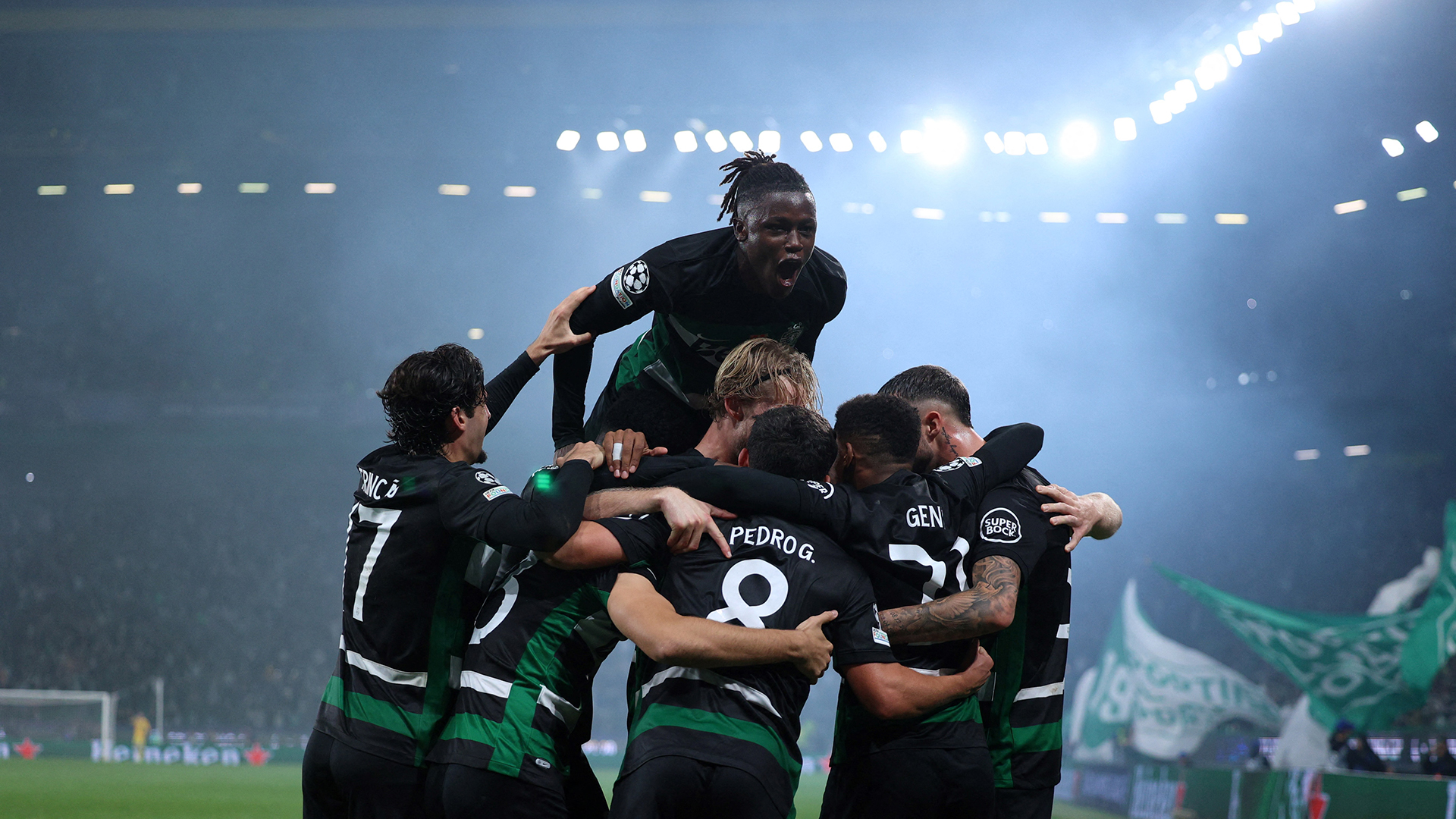Welcome to What Is This USWNT Player's Deal, a recurring series in which Defector selects a name from the American players most likely to go to the Women's World Cup this summer and answers the question: What is this USWNT player’s deal?
One of the wildest quotes anyone has given about any single member of the United States Women's National Team came from Megan Rapinoe earlier this year, when asked about then-22-year-old central defender Naomi Girma. At that point in Girma's young career she had already made 11 starts and two substitute appearances for the USWNT, and had won the NWSL Rookie of the Year and Defender of the Year awards in her debut season with the San Diego Wave. Those are the sorts of accolades that point to a player with the potential to be a star, out there at some point in the nebulous future, but what Rapinoe's effusive-and-also-true answer underscores is that Girma is, right now, already an essential player for the best team in the world.
Plenty of players have had plenty of praise for Naomi Girma, but Megan Rapinoe really laid out why she thinks Girma is a generational player for the #USWNT today here in Frisco. pic.twitter.com/EnFfLDF6SB
— Meg Linehan (@itsmeglinehan) February 21, 2023
The comp is good, though not even Ertz's breakthrough to the fore of the USWNT was so abrupt or so complete. It's not like Girma came out of nowhere exactly, but the uninterrupted smoothness of her rise to the very top of the sport has been eerie to behold. Two years ago, Girma was captaining Stanford; now she'll anchor a World Cup defense at 23, and everyone around the program only expresses calm ease at the prospect.
The USWNT has yet to formally announce its roster as of this writing, but Girma and Becky Sauerbrunn were two of the nine players featured in a recent Sports Illustrated cover shoot. Sauerbrunn has anchored the U.S. central defense for three World Cups; if the photoshoot choice means what it seems likely to mean, then it's a true delight that she will get to play alongside Girma, 15 years her junior, at her fourth and final tournament.
The USWNT is in flux, an uncertain transitional state between the glorious 2015 and 2019 Cup-winning squads and the future, and that sense of unease is only exacerbated by the cruel World Cup absences of Catarina Macario and Mallory Swanson. The heroes of yore are either like 38 years old (Sauerbrunn) or out of the program. So much hinges on first-timers and younger players, and head coach Vlatko Andonovski must feel great relief knowing that, as far as central defense is concerned, there is one newcomer who has shown herself to be the ready for the moment.
Who Does She Play For?
Girma went first overall to the San Diego Wave in the 2022 NWSL draft, and in Southern California she enjoyed as good a rookie season as possible. She played almost every minute of the the Wave's 2022 season when she wasn't on national team duty, and has played every minute of their 2023 season. She won both of those aforementioned awards, yes, but perhaps most impressive of all was the team success the Wave enjoyed under her steady leadership. Winning as an expansion team is incredibly difficult, yet the Wave earned the three seed and won a playoff series, falling only to the eventual champion Portland Thorns. They allowed just 21 goals in 22 games, the second-best defensive record in the league.
They're even better this season, and Girma celebrated her 23rd birthday on Wednesday by signing a three-year extension. The Wave currently sit top of a very tight league table, and their rivalry game with Angel City this coming weekend should be a very fun one.
Girma's parents both immigrated to the United States from Ethiopia, meeting and starting their family in San Jose in the late '90s. Girma began playing with other kids from the Bay Area's Ethiopian community; at age 9, on a whim, she joined a friend for practice with her lower-division club team. The legend goes that her friend's coach saw her play, recognized her natural talent immediately, and contacted Girma's mother, telling her, "Not finding a way for Naomi to play soccer would be a crime. Even considering it would be a crime." The club wanted to fast-track her to the top team immediately, yet she played with her friend on the silly team all season out of loyalty.
A long Sports Illustrated story about Girma's soccer journey makes clear that she's always been an extremely talented player, and yet could very well have fallen through the cracks in the U.S. Soccer system. It took a community effort to support Girma, help her navigate the U.S.'s labyrinthine (and expensive) club soccer maze, and push her to play national-team and collegiate soccer. She excelled at every stage, winning a national championship while captaining Stanford as a sophomore. She was teammates with Catarina Macario, which seems rude and unfair to competitors.
The Lindsey Horan Magnifique Test
The Lindsey Horan Magnifique Test refers to the following foolproof heuristic for determining whether or not a U.S. player is actually good or just good by our rosy American standards: Do fans tweet lovingly about them in their local language?
Que jugadora tan espectacular es Naomi Girma.
— Nallely 🐈 (@_Hectopasca1) October 1, 2022
Este segundo tiempo bien podría ser Naomi vs NC. 🥴
How Does She Play?
With control. Girma's A-1 trait, and the skill that has everyone projecting at least a decade-plus of top-level defending from her, is a shockingly developed ability to read the game. At 23 she's already shown a fine handle on the most difficult aspect of the game: She sees attacking patterns before they unfurl, going Precog Mode to get to and win space before anyone else even knows which space to fight for. Watching her defend is an almost uncanny experience. There she is, again, intercepting a long pass, cutting off a running lane, stonewalling a dribbler. I do not really believe in soccer stats, but if the stats say she's in the 96th percentile of ball recovery efficiency and the 92nd percentile in dribbling defense, that seems noteworthy.
Girma's control of the game extends beyond killing attacking moves. Once she has the ball, you cannot dislodge it from her, and she figures to be a key part of the USWNT's offense because she has such tremendous passing range. The highlight highlighted in the highlight section down below is yet another Sophia Smith dribbling clinic, but it all starts with Girma's bold pass out to the far wing. It's something from nothing.
That passing is going to be key for a USWNT that will be without key attackers and has shown some real struggles against compact, disciplined teams. The way to break those teams down is to hit a killer pass at an unexpected time or from an unexpected place—like, say, from a center back.
The Parental Recognition Index
The Parental Recognition Index is a holistic, objective metric that analyzes a player’s full array of skills and talents, distilling it all into a single number that corresponds to their ultimate potential and the likelihood that they will become a big enough star at the World Cup that one of your parents will send you a text message about them.
By the time the USWNT reaches the semifinals, they are no longer being allowed to play offense-first, attacking soccer, they are engaged in a slugfest that, within the first 11 minutes, makes itself known as the type that clearly has one single goal in it and no more. As such, Girma is being Asked Questions at the back, big thorny ones. She's answering every one of them. Finally, she pops a longball down the line to a streaking Trinity Rodman. It does not result in a goal, though it is the best chance of the game. There is a 68 percent chance your parent turns to you in this moment and says something like, "Why don't they put her in midfield? She's good at kicking." You shrug.
Show To Me A Cool Highlight
Look how much space Girma eats up! Also she does not score much, but this one was sick:
GOLAZO NAOMI GIRMA ( @naomi_girma )!!! pic.twitter.com/voiqW6SzpZ
— Antonio Garcia (@Iruk_WomenSport) September 3, 2021
How Does She Fit In With The U.S. Team?
Ideally! Did you not read the previous sections or what?
How Close Is She To The Hypothetical Best XI?
She has to start. Sauerbrunn isn't the defender in space she used to be, and Alana Cook isn't as steady as Girma is. This is Girma's moment, and she's ready for it.





